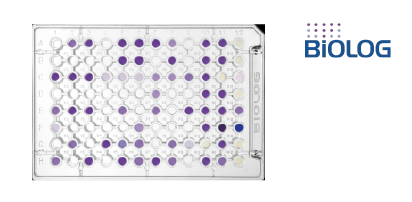>
>
>

GEN III MicroPlate
Intended Use The GENIII MicroPlate test panel provides a standardized micromethod using 94 biochemical tests to profile and identify a broad range of Gram-negative and Gram-positive bacteria1,2 . Biolog’s Microbial Identification Systems software is used to identify the bacterium from its phenotypic pattern in the GENIII MicroPlate.
Baca Selengkapnya Minta PenawaranProduk data dan gambar GEN III MicroPlate
Spesifikasi GEN III MicroPlate
Description
- The Biolog GENIII MicroPlate analyzes a microorganism in 94 phenotypic tests: 71 carbon source utilization assays (Figure 1, columns 1-9) and 23 chemical sensitivity assays (Figure 1, columns 10-12). The test panel provides a “Phenotypic Fingerprint” of the microorganism that can be used to identify it at the species level.
- All necessary nutrients and biochemicals are prefilled and dried into the 96 wells of the MicroPlate. Tetrazolium redox dyes are used to colorimetrically indicate utilization of the carbon sources or resistance to inhibitory chemicals.
- Testing is performed very simply, as shown in Figure 2. The isolate to be identified is grown on agar medium and then suspended in a special “gelling” inoculating fluid3 (IF) at the recommended cell density. Then the cell suspension is inoculated into the GENIII MicroPlate, 100 µl per well, and the MicroPlate is incubated to allow the phenotypic fingerprint to form. All of the wells start out colorless when inoculated. During incubation there is increased respiration in the wells where cells can utilize a carbon source and/or grow. Increased respiration causes reduction of the tetrazolium redox dye, forming a purple color. Negative wells remain colorless, as does the negative control well (A-1) with no carbon source. There is also a positive control well (A-10) used as a reference for the chemical sensitivity assays in columns 10-12. After incubation, the phenotypic fingerprint of purple wells is compared to Biolog’s extensive species library. If a match is found, a species level identification of the isolate is made.
Brosur GEN III MicroPlate
Brosur GEN III